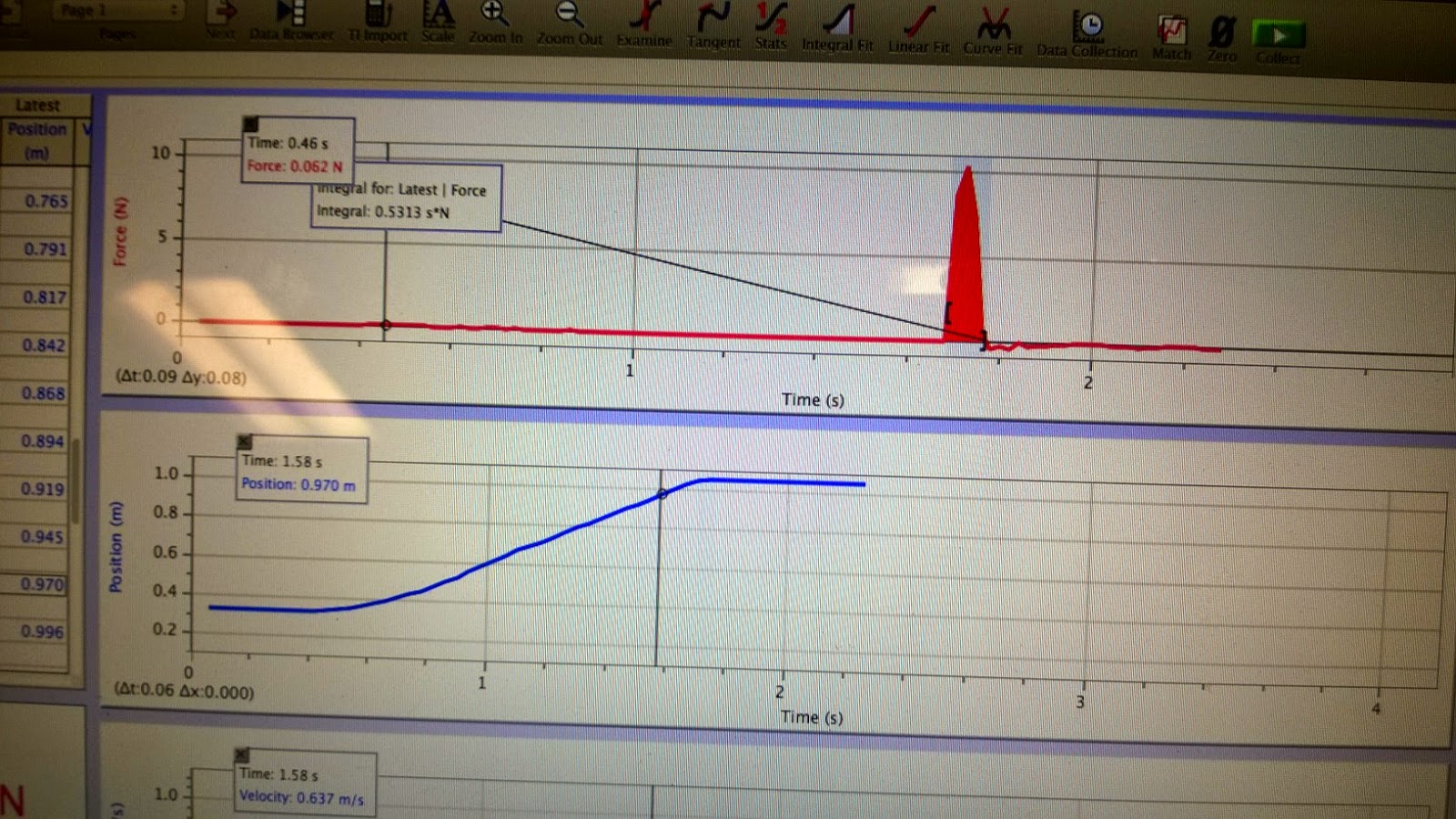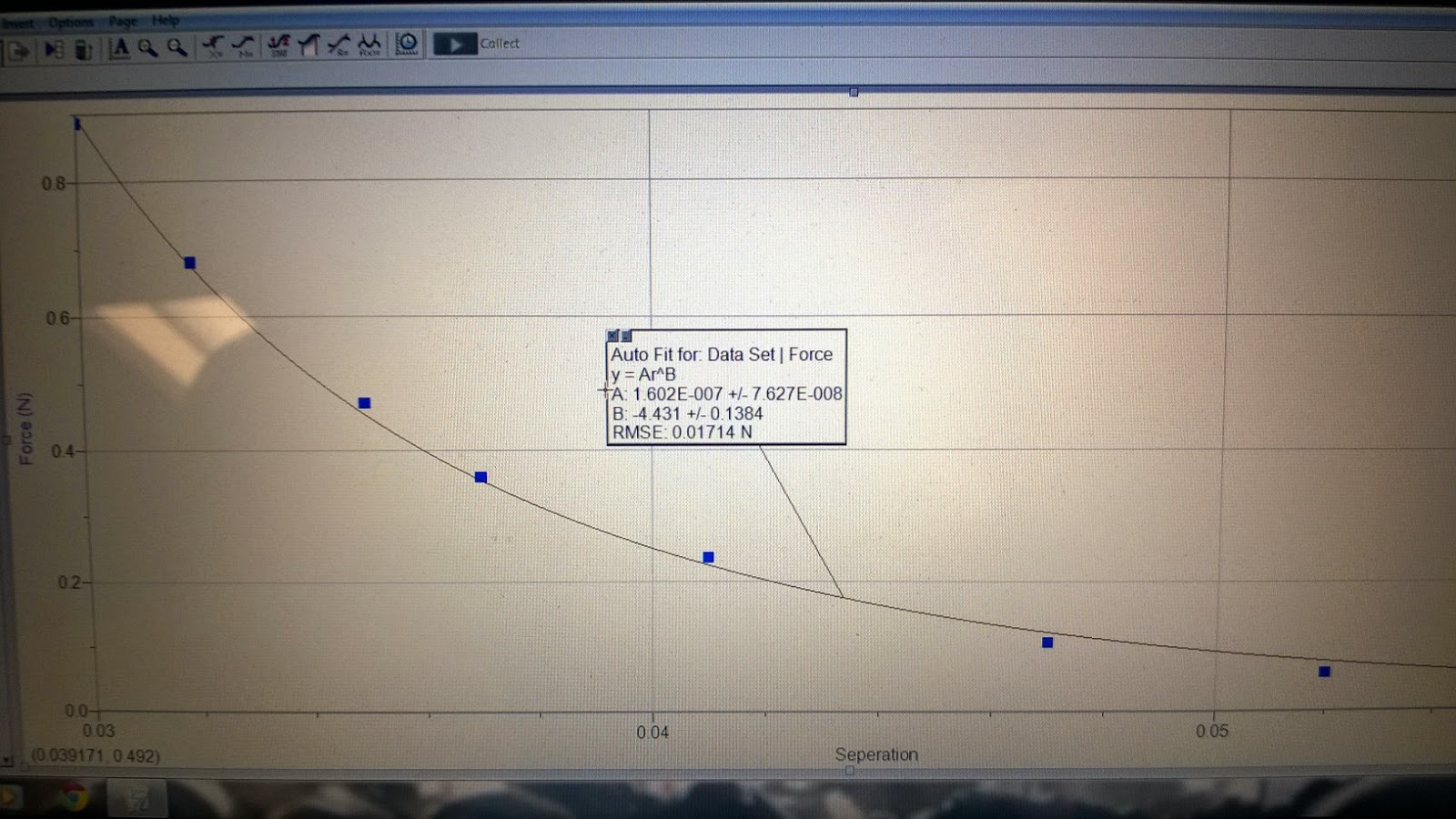Purpose:
The purpose of this lab is look at a two dimensional collision and determine if the momentum and energy are conserved with a marble on marble and a steel ball with marble.
Experiment:
The first experiment we did was a collision with a steel ball and a marble. We get the data we needed by filming the collision of the balls on a smooth level surface. We gently sent one ball colliding with a stationary ball create an angle of separation after the balls collision. Here is a picture of the stet up described.
Here is the first video of the collision of the marble hitting the steel ball at rest and the second video of the marble hitting the marble at rest.
We then used a feature in Logger Pro to plot points of objects during time intervals. So we plotted points on the video for the position of each ball for each period of a second. We also set a known length in the video to a measurement and change the x axis of the video to be align with the positive direction with the first ball moving. Then with this data we can let Logger Pro calculate position vs time by measured distance we set on the video.
Here is the data for the first collision with the marble hitting the steel ball. The data is as follows
First ball (marble) velocity (m/s)
Yo = 0;
Xo = 0.5128 m/s
Yf = 0.06326 m/s
Xf = -0.08789 m/s
Second ball (steel) velocity (m/s)
Yo = 0
Xo = 0
Yf = -0.03030 m/s
Xf = 0.1353 m/s
First ball (marble) velocity (m/s)
Yo = 0;
Xo = 0.0.4847 m/s
Yf = -0.1578 m/s
Xf = 0.2849 m/s
Second ball (steel) velocity (m/s)
Yo = 0
Xo = 0
Yf = 0.1337 m/s
Xf = 0.1496 m/s
Now to check if the energy was conserved we plotted a graph with calculated values for Momentum on X-axis, Momentum on Y-axis, and Kinetic Energy.
Marble hitting steel ball:
The orange dotted line on top is Momentum X vs time.
The purple dotted line on the bottom is Momentum Y vs time.
The blue dotted line in the middle is kinetic energy vs time.
The kinetic energy line should be straight to show energy is conserved which isn't bad as shown below.
Marble hitting marble:
The black dotted line on the top is Momentum X vs time.
The light blue dotted line on bottom is Momentum Y vs time.
The green dotted line in the middle is kinetic energy vs time.
The kinetic energy line should be straight to show energy is conserved which isn't bad as shown below.
Results:
Overall I think the experiment was a success and our lines are not perfectly straight to show energy was conserved because of the clicking on each location of the ball is not exact and was very tedious to do. If we had bigger intervals maybe the line would be straighter or if the computer could just locate the location for us it would work better. Either way I think our results show energy is conserved.






















